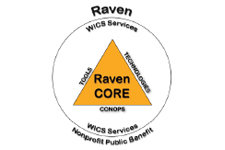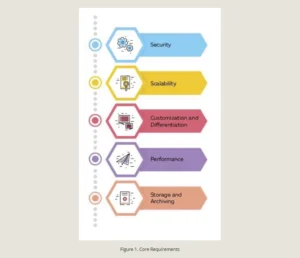WICS: Emergency Services Receive Critical Cloud Transformation

California-based, nonprofit WICS needed to migrate its emergency response management platform, Raven, from its existing on-premises data centers to a more secure, reliable and agile environment
Read the Full Customer Story
Cloud Migration Services from Hitachi Vantara were chosen by WICS to provide end-to-end cloud services. The company’s solution team assessed the unique needs of the Raven platform to deliver a robust architecture in the Amazon Web Services (AWS) cloud that supports emergency operations and ensures mission-critical performance.
A robust architecture and services.
Application Migration and Managed Services
Worldwide Incident Command Services Corporation needed to migrate Raven, its extreme-scale, emergency management R&D application, to a reliable, resilient and secure operational platform for worldwide use. Raven is a mobile, webbased command and control system, which has a long-range aim to deal with dynamically escalating incidents, from first response to extreme-scale. It also is set to facilitate collaboration across all levels of government, commercial and private use for all hazard events. Raven was designed to serve a specific category of operator: The Tired-Dirty-Hungry Responder Under Extreme Stress. Since 2010, while still transitioning from R&D status, Raven has been used on several hundred emergency incidents, a large number of which involve Type 1 Incident Management Teams.
Before Raven went online and was hosted at Amazon Web Services, the earlier R&D versions (LDDRS and NICS) were hosted primarily at the San Diego Supercomputer Center on the campus of the University of California at San Diego. A few databases were hosted on the developer’s servers at Massachusetts Institute of Technology Lincoln Laboratory (MITLL).
The services team provided the software and systems development for engineering Raven’s transition to AWS Cloud. The team’s development work was to take the code from MITLL that was posted on the open source library, GitHub, debug it and make it operational on AWS. The team assessed WICS operational needs and developed a technology strategy that incorporated the following core requirements as shown in Figure 1 and described below.

- Security: To protect and keep people safe by providing access to tools and information used and shared by first responders.
- Scalability: To support auto-scaling based on the magnitude of and emergency level of incidents.
- Customization and Differentiation: To allow transitioning from the original R&D version technologies to a WICS-owned and managed platform for building the next-generation Raven with significantly advanced technologies.
- Performance: To manage application workloads for handling thousands of concurrent users and hundreds of concurrent incidents.
- Storage and Archiving: To process and store permanent records of information developed during an incident that are fully discoverable for rapid development of shared understanding, decision-making and distribution of tailored information to incident stakeholders.
Robust Architecture and Services
In addition to hosting Raven onto AWS for the purposes of scalability and resilience, WICS instituted enterprise-level managed services that were supplied by the Cloud Migration Services team, as well as application migration, cloud hosting, IT support, design infrastructure and managed services. With WICS development firmly rooted in operational expertise, the Raven project has always been about concept of operations (CONOPS) innovation rather than just technology.
The decision to work with the services team allowed the WICS staff, who are subject matter experts on emergency management, to focus on their core competencies. The services team handled the technology strategy, also educating the WICS team on managed services.
The insights that the services team shared with the WICS staff expanded their knowledge on the capabilities of managed services without over-reaching the needs and skill set of the first responder. This exchange of information and insights allowed WICS to focus on innovation instead of technology and catapult Raven to the next level.

The interplay between WICS operational staff with the Cloud Migration Services technical team resulted in a successful collaboration. Through the security framework, the AWS tools enable:
- Secure Emergency Platform: Preserve homeland defense and national security. Prevent hacker attempts by state and non-state actors who want to aggravate an emergency, or use the occurrence of an emergency as a diversion for some other hostile act.
- Robust Cloud Architecture: Mirror the response to a large-scale emergency. Ensure a resilient, reliable and redundant response to meet the four main needs of all emergency operations: preparedness, planning, response and recovery.
- Self-Hosting: Support the capacity for adding more capabilities according to localized needs.

Fast track cloud adoption to accelerate innovation and business value. Drive change at speed using proven methodology and expertise.

